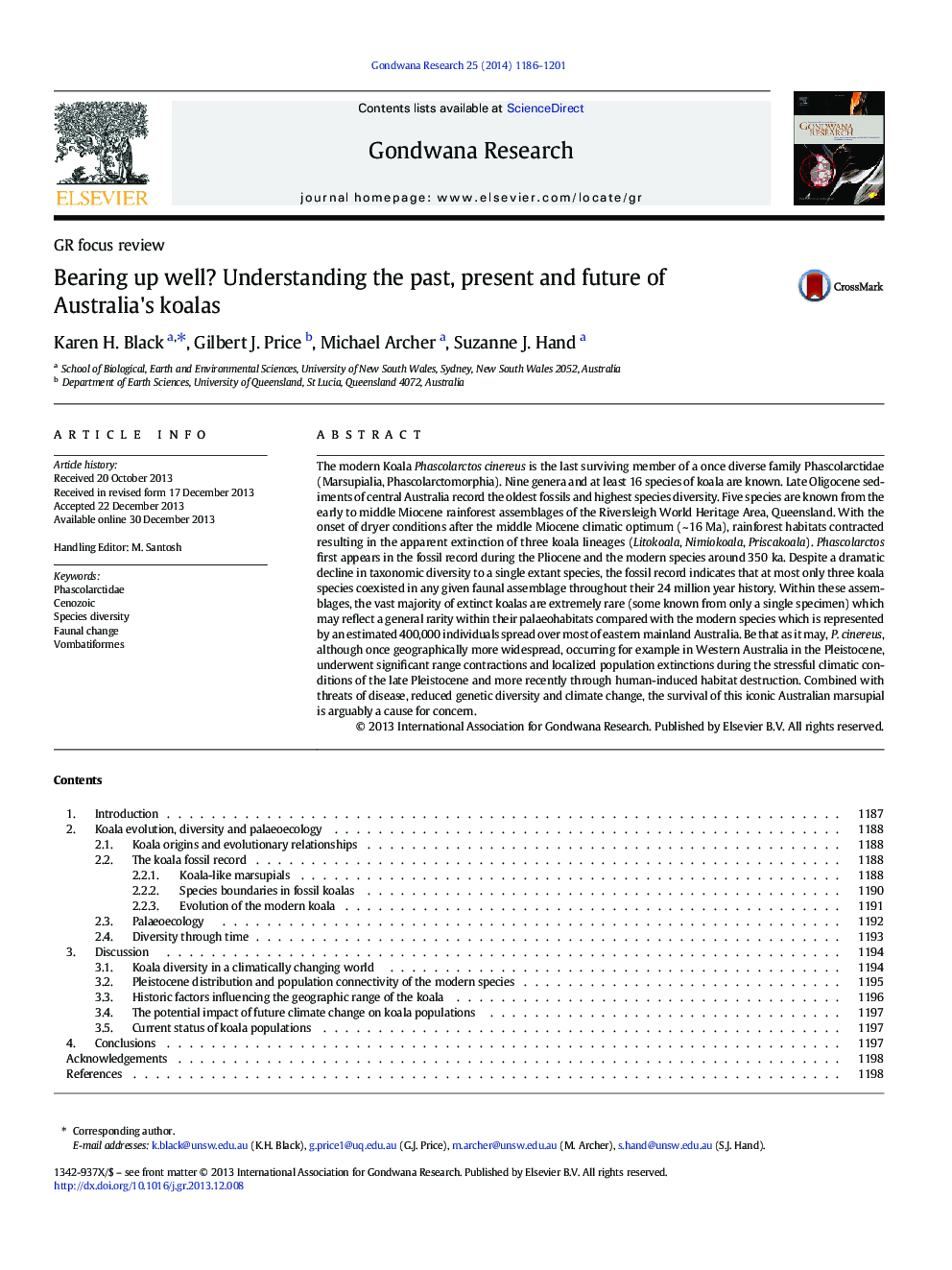| کد مقاله | کد نشریه | سال انتشار | مقاله انگلیسی | نسخه تمام متن |
|---|---|---|---|---|
| 4726983 | 1356355 | 2014 | 16 صفحه PDF | دانلود رایگان |
• Koala taxonomic and ecological diversity has declined since the late Oligocene.
• Habitat change related to past climate change has significantly impacted diversity.
• Understanding past responses to climate change can inform conservation strategies.
The modern Koala Phascolarctos cinereus is the last surviving member of a once diverse family Phascolarctidae (Marsupialia, Phascolarctomorphia). Nine genera and at least 16 species of koala are known. Late Oligocene sediments of central Australia record the oldest fossils and highest species diversity. Five species are known from the early to middle Miocene rainforest assemblages of the Riversleigh World Heritage Area, Queensland. With the onset of dryer conditions after the middle Miocene climatic optimum (~ 16 Ma), rainforest habitats contracted resulting in the apparent extinction of three koala lineages (Litokoala, Nimiokoala, Priscakoala). Phascolarctos first appears in the fossil record during the Pliocene and the modern species around 350 ka. Despite a dramatic decline in taxonomic diversity to a single extant species, the fossil record indicates that at most only three koala species coexisted in any given faunal assemblage throughout their 24 million year history. Within these assemblages, the vast majority of extinct koalas are extremely rare (some known from only a single specimen) which may reflect a general rarity within their palaeohabitats compared with the modern species which is represented by an estimated 400,000 individuals spread over most of eastern mainland Australia. Be that as it may, P. cinereus, although once geographically more widespread, occurring for example in Western Australia in the Pleistocene, underwent significant range contractions and localized population extinctions during the stressful climatic conditions of the late Pleistocene and more recently through human-induced habitat destruction. Combined with threats of disease, reduced genetic diversity and climate change, the survival of this iconic Australian marsupial is arguably a cause for concern.
Figure optionsDownload as PowerPoint slide
Journal: Gondwana Research - Volume 25, Issue 3, April 2014, Pages 1186–1201
